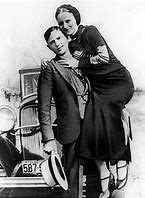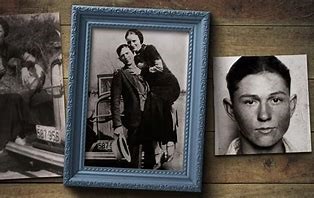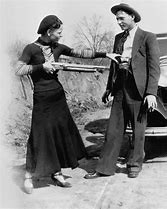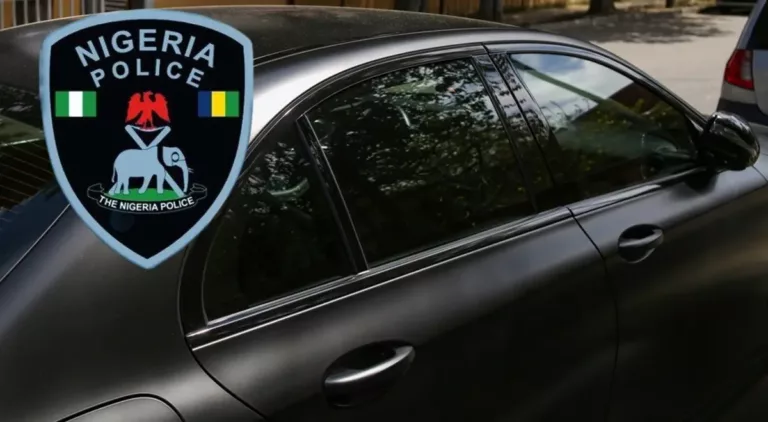Bonnie Parker and Clyde Barrow, one of the 20th century’s most infamous couples, became notorious outlaws during the Great Depression. Despite their crimes, they were idolized for their unwavering devotion to each other.
Bonnie Parker, born on October 1, 1910, in Rowena, Texas, moved to Cement City in West Dallas. She married Roy Thornton at 16, but he was soon imprisoned, and they never reunited. Later, Bonnie joined Clyde on a crime spree that captivated the public, who saw them as romantic rebels.
Clyde Barrow, born on March 24, 1909, in Telico, Texas, grew up in a poor tenant farming family. They moved to West Dallas, where his father opened a gas station. Clyde, often in trouble with the law alongside his brother Buck, found his perfect partner in Bonnie. Despite his small stature, he left a significant mark on history through their daring exploits.
There are differing accounts of how Bonnie and Clyde met, but the most common story is that they were introduced by Clyde’s friend Clarence Clay. On January 5, 1930, Bonnie, a lonely and out-of-work waitress abandoned by her imprisoned husband, attended a social gathering at her brother’s house in Oak Cliff, Dallas, where she met Clyde.
The two quickly became inseparable, but in April 1930, Clyde was jailed for car theft. Devastated, Bonnie smuggled a gun to Clyde, enabling his brief escape before he was recaptured. While in jail, Clyde killed an inmate who had assaulted him, though another inmate took the blame. To avoid hard labor, Clyde amputated two of his toes, unaware that he was soon to be released.
Reunited in February 1932, Bonnie and Clyde began their crime spree. Clyde and fellow inmate Ralph Fults, whom he befriended in prison, planned to raid Eastham prison. To prepare, they robbed stores for weapons, with Bonnie assisting. Bonnie was caught during one robbery and jailed, where she began embracing the gangster lifestyle.
Bonnie was released after a few months, as officials couldn’t believe she willingly committed the crime. She quickly reunited with Clyde, her loyalty stronger than ever. Ralph Fults was no longer in the picture, but by the summer of 1932, Bonnie and Clyde had new recruits: Raymond Hamilton and Ross Dyer.

In August 1932, while drinking moonshine in Oklahoma, police identified Clyde as a suspect in a recent shooting. Clyde and Raymond Hamilton opened fire, killing one officer and wounding another, starting Clyde’s killing spree. Two months later, the Barrow Gang allegedly killed a man during a robbery in Sherman, though Clyde’s involvement is uncertain due to conflicting evidence.
On Christmas Eve 1932, 16-year-old William Daniel Jones joined the gang and attempted his first crime the next day in Temple, Texas, by trying to steal a car. When he struggled, Clyde helped, but the car’s owner, Doyle Johnson, confronted them. Clyde shot Doyle, who died the next day. Bonnie drove the getaway car, escaping as a crowd gathered around the dying man.
A month later, the Barrow Gang continued their crime spree, killing more people. Police, desperate to stop them, set up a stakeout but failed, resulting in the death of Deputy Malcolm Davis after Clyde shot him.
In March 1933, Clyde’s brother Buck and his wife Blanche joined the gang. The five, including teenage William, hid out in Missouri, spending their days drinking and playing loud card games. Their behavior drew attention, and police were called when a particularly noisy game involved gunfire. Five officers arrived, only to be met with more gunfire.

Clyde and Buck fatally shot two officers, with Bonnie assisting by firing at them and helping the Barrow brothers secure their getaway car. Sergeant Kahler was injured by splinters from a tree hit by Bonnie’s bullets. The gang then fled to Joplin, leaving behind most of their belongings, including a roll of undeveloped film.
This film contained one of the most infamous photos in true crime history: Bonnie, cigar in mouth, leaning against a car with a pistol in her hand. The media used this image to headline stories about the Barrow Gang’s crimes.
Now fugitives, Bonnie, Clyde, Buck, Blanche, and William continued their crime spree, committing robberies and car thefts. They occasionally kidnapped hostages, later releasing them with some cash for travel. Despite some public fascination with their story, their criminal activities were mostly violent, resulting in numerous deaths.
The media’s portrayal of Bonnie and Clyde as rebellious figures resonated with the American public during the Great Depression, despite the reality of their violent crimes.
Bonnie and Clyde’s crimes were seen by some as revenge against banks and law enforcement, garnering public sympathy and providing thrilling stories for newspapers. In reality, the gang often struggled with internal conflicts, stress over hiding places, and basic hygiene, resorting to cold baths in streams.
In June 1933, Clyde, Bonnie, and William were driving near Wellington, Texas, when Clyde missed a sign about a bridge under construction. They crashed into a ravine, severely injuring Bonnie. Her leg was badly damaged, exposing the bone. Clyde pulled her from the wreckage, but she couldn’t walk.
A nearby farmer heard the crash and came to help, only to be threatened by Clyde and William with submachine guns. They forced him to assist Bonnie and took his family hostage. However, a farmhand escaped and alerted the police, who then headed to the house.
Sheriff Corry and City Marshal Paul Hard were taken hostage by the Barrow Gang, who then reunited with Buck and Blanche. Desperate and needing medical care for Bonnie, they headed to a tavern in Platte County, Missouri. Their presence drew attention due to Bonnie’s obvious injuries, Blanche’s unusual clothing, and newspapers covering their windows.
Clyde and William went to a pharmacy for supplies, where they were recognized. The pharmacist alerted the police, leading to a gunfight at the tavern. Despite being outnumbered and facing an armored car, the gang escaped due to a malfunction causing a ceasefire.
However, Blanche was injured by glass, and Buck was shot in the head, exposing his brain. The gang hid in an abandoned amusement park but were soon surrounded by officers. A standoff ensued, attracting about 100 spectators. Buck was shot again and later died in the hospital, while Blanche was arrested. Bonnie, Clyde, and William escaped on foot.
William decided to leave the gang and returned to his mother’s home in Houston, where he was quickly arrested. The Barrow Gang was falling apart, but Bonnie and Clyde remained at large. They continued their crime spree, robbing and killing to survive.
In November 1933, a grand jury indicted them for the murder of Deputy Malcolm Davis. In January 1934, Clyde helped friends break out of Eastham prison, resulting in the murder of Major Joe Crowson. This prompted a manhunt led by Texas Ranger Captain Frank Hamer.
As public sentiment turned against Bonnie and Clyde, Hamer, known for his lethal track record, was determined to bring them down. Authorities offered bounties for their capture, dead or alive, with Hamer undeterred by the prospect of killing a woman.

Bonnie and Clyde had only managed to successfully break one inmate out of jail, a man named Henry Methvin. The trio made plans to visit Henry’s father in Louisiana.
Still, unbeknown to them, Frank Hamer figured out Clyde’s way of thinking and predicted he’d use Henry’s family as a source of replenishment. As such, he managed to do what no other member of the police force could do: get one step ahead of Bonnie and Clyde.
Frank got in touch with Henry’s dad, Ivan, and struck up a deal: if the father helped trap the group, including his son, Henry wouldn’t get the death penalty.
On May 23, 1934, the group was heading to Henry’s family home. Police were hiding in the bushes on the roadside, anticipating their arrival, and Ivan had parked his truck nearby.
It was hoped that Clyde would stop his car when Henry pointed out his dad’s vehicle was by the road – which he did. As Clyde’s car slowed, officers jumped out from behind the bushes and opened fire.
After years of managing to outsmart the police and carry out a spree of violent crimes, Clyde’s death was unspectacular. He was the first to die with a single bullet to the head.
Henry escaped the scene, and with Clyde dead at the wheel and Bonnie screaming beside her dead lover, officers began shooting the car, emptying bullets into the vehicle – and Bonnie and Clyde’s bodies.
After the pistol ammo ran out and Bonnie and Clyde were dead, officers continued firing with shotguns to ensure they didn’t escape. Clyde sustained 17 bullet wounds, while Bonnie had 26. She died wearing her wedding ring from her previous marriage to Roy Thornton and a three-headed snake ring from Clyde. Frank Hamer regretted killing a woman but believed it saved other officers’ lives.
The aftermath resembled a circus, with spectators taking gruesome souvenirs. Law enforcement eventually towed the bullet-riddled car with the bodies inside to disperse the crowds. Despite objections from Bonnie’s mother, the funeral drew tens of thousands, fueling the enduring public fascination with the couple.
Sources
- https://www.thecollector.com/bonnie-and-clyde-outlaws-great-depression/
- https://www.thoughtco.com/bonnie-and-clyde-1779278
- https://encyclopediaofarkansas.net/entries/bonnie-and-clyde-3207/https://academickids.com/encyclopedia/index.php/Bonnie_and_Clyde#google_vignette
- https://apnews.com/article/nigeria-illegal-critical-minerals-lithium-arrests-tin-4c639e034f6bca724bf26cdc55805d4e




